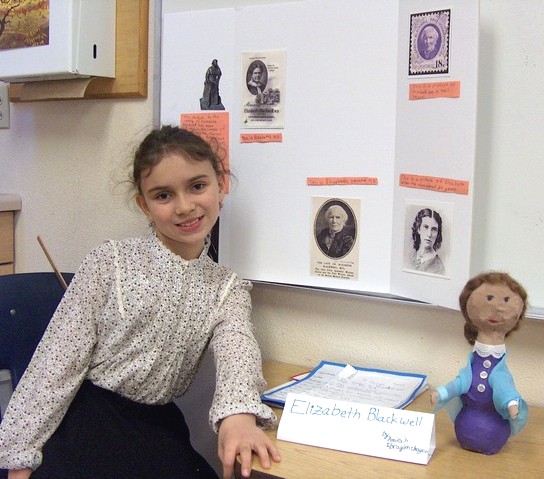 Visitors to the third grade classroom on a recent afternoon were greeted by an array of modern day and historical figures, including: former President Abraham Lincoln, Mother Teresa, Pocahontas, Benjamin Banneker, Dr. Temple Grandin, and Eleanor Roosevelt. Each third grader chose an individual as a “moral hero” to study and later personify for the classroom presentation.
Visitors to the third grade classroom on a recent afternoon were greeted by an array of modern day and historical figures, including: former President Abraham Lincoln, Mother Teresa, Pocahontas, Benjamin Banneker, Dr. Temple Grandin, and Eleanor Roosevelt. Each third grader chose an individual as a “moral hero” to study and later personify for the classroom presentation.
“Studying biographies is a classic assignment for third graders,” explains Mount Madonna School (MMS) third grade teacher Hamsa Heinrich, discussing the project later. “They are stretching to read longer books and are learning strategies to be independent note takers. Besides these necessary skills, people are a fascinating subject, and the children are always pleasantly surprised at the richness of reading about real-life stories. The old adage that ‘facts are stranger than fiction’ is astoundingly true! There are also many wonderful biographies published at just the right reading level for this age group.
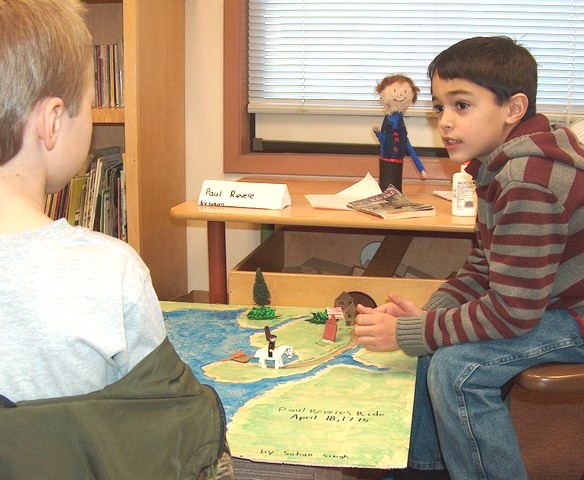 “Because we dedicate considerable time to this extended lesson, students are able to go into greater depth than would otherwise be possible. This allows students to make more of a connection or gain a deeper understanding of the issues their chosen hero worked on, and the impact he/she made.”
“Because we dedicate considerable time to this extended lesson, students are able to go into greater depth than would otherwise be possible. This allows students to make more of a connection or gain a deeper understanding of the issues their chosen hero worked on, and the impact he/she made.”
Third grader Ben Pearson selected Benjamin Banneker as his moral hero. The life work of Banneker, a free African American scientist, author and surveyor, was largely ignored and was nearly forgotten due to racial prejudice.
“I chose him because I was searching for a moral hero named Benjamin and I wanted to do Benjamin Franklin, but my mom and dad said he had slaves, so I found Benjamin Banneker,” explains Pearson. “I also chose him because he likes math and science. He made the first striking clock by hand with all the parts made in America. He wrote five almanacs. He helped design the layout of Washington D.C. He and Thomas Jefferson wrote letters to each other. Banneker also proposed the Office of Peace. He created things that proved that the assumptions people had about black people [in the late 1700s] were incorrect.”
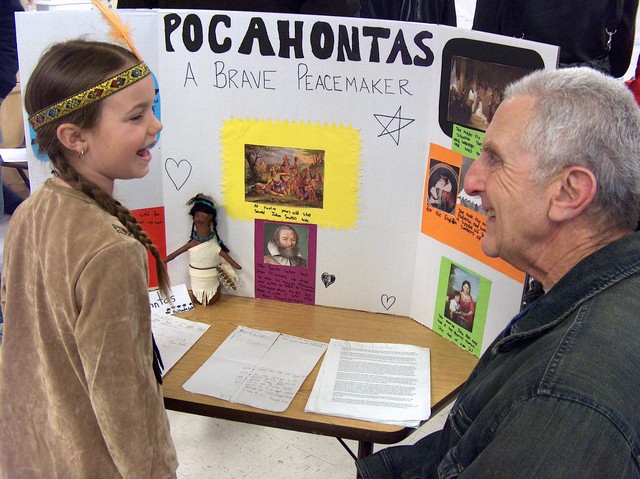
“In all the Disney movies Pocahontas is the only princess based on a real person,” third grader Kayla Goldstein wrote in her report. “She was known for her wit and spirit, for peace making and her own bravery.”
“Paul Revere was a colonist and good silversmith, shared third grader Sohan Singh during his presentation. “He was moral hero because he helped gain American freedom and worked super hard.”
“I chose Temple Grandin because my Grandma knows her, and because she sounded interesting,” explains student Blythe Wilson. “She is inspiring to me because she helps animals and is the first autistic person to describe what it is like to have autism. It was because of her autism that she was able to get the perspective of cows and make soothing machinery for cows. [Grandin is respected for her work in the field of animal welfare and humane livestock handling processes].”
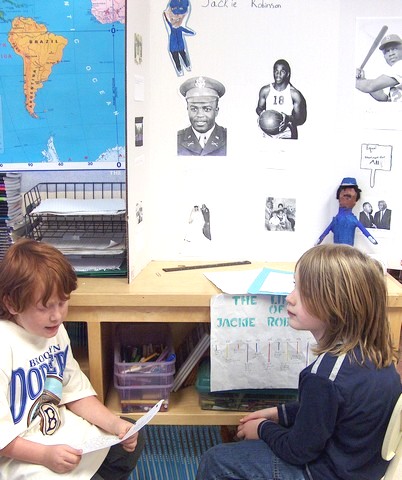
“I borrowed the seed idea of studying ‘Moral Heroes’ from a colleague,” says Heinrich. “I loved the idea that the students would not only pick someone they admired as a hero, but someone who helped improve the world somehow. In addition to individual presentations, we’ve broadened the project over the past several years with other facets. These can include: quizzes that a student may give listeners following their presentation, dioramas and other visual art components, brilliant costumes, and props. Each student also writes a poem about his or her chosen hero.”
Another significant element that Heinrich has integrated into this project is for students to create a timeline of each hero.
“This pushes my third grader concrete learners into much deeper, abstract thinking about time and historical relationships,” she says. “They not only learn about a person and their contributions, but also grapple with learning about the influences and prevalent thoughts of that time period. We order and compare information chronologically, and use that timeline as a reference point in all of our studies.
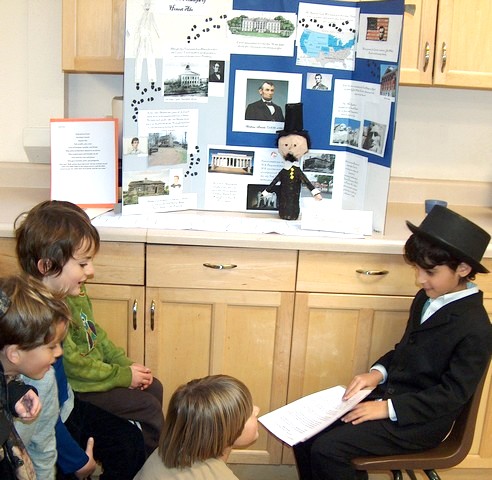 “Using timelines helps students to understand that Martin Luther King, Jr., for instance, did not live during the Civil War alongside Harriet Tubman. It is the visual connection that makes the difference. In the past, it was difficult for students to recognize the long and on-going struggle for equality; they always wanted to lump the civil rights struggle into one time period.”
“Using timelines helps students to understand that Martin Luther King, Jr., for instance, did not live during the Civil War alongside Harriet Tubman. It is the visual connection that makes the difference. In the past, it was difficult for students to recognize the long and on-going struggle for equality; they always wanted to lump the civil rights struggle into one time period.”
Each student also makes a bottle doll representation of his or her chosen hero. These visual representations were prominently displayed on students’ desks during their presentations.
“There was just something about wrapping ‘Mother Teresa’ in white cloth, for example, or making a black ‘stovepipe’ hat just the right size to fit onto the small head of the Abraham Lincoln doll that that brought the characters more to life for each child,” recalls Heinrich. “Each student admired and felt close their hero. It was also interesting to have two students select lesser-known Americans, Benjamin Banneker and Temple Grandin.”
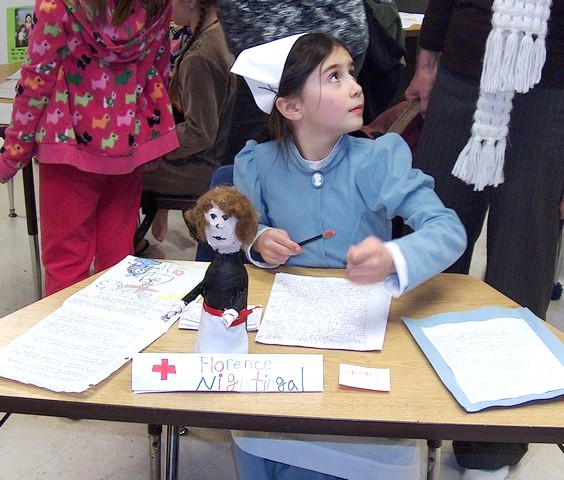 The crowning part of this in-depth learning project was inviting others into the classroom to share in their discoveries and applaud the hard work of the presenters, as often these bright moments are not witnessed in classrooms. Heinrich commented on her students’ presentations:
The crowning part of this in-depth learning project was inviting others into the classroom to share in their discoveries and applaud the hard work of the presenters, as often these bright moments are not witnessed in classrooms. Heinrich commented on her students’ presentations:
“It was lovely to see each third grader rise to the occasion and present memorable monologues and five-point summaries. The students enjoyed teaching what they learned and appreciated recognition for all their efforts. The audience, in turn, felt uplifted and inspired by the class’ deep study of morally courageous people.”
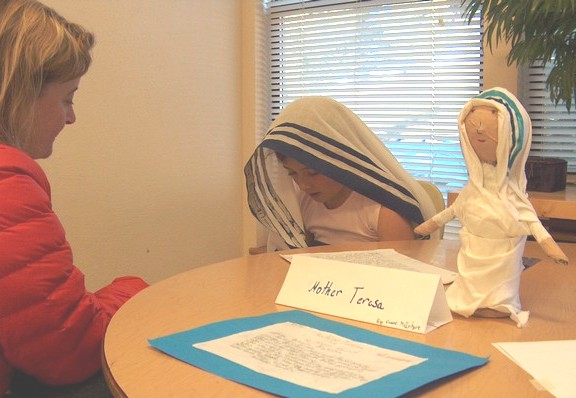 #####
#####
Contact: Leigh Ann Clifton, Media & Public Relations
Nestled among the redwoods on 355 mountaintop acres, Mount Madonna is a safe and nurturing college-preparatory school that supports students in becoming caring, self-aware and articulate critical thinkers, who are prepared to meet challenges with perseverance, creativity and integrity. The CAIS and WASC accredited program emphasizes academic excellence, creative self-expression and positive character development. Located on Summit Road between Gilroy and Watsonville.
